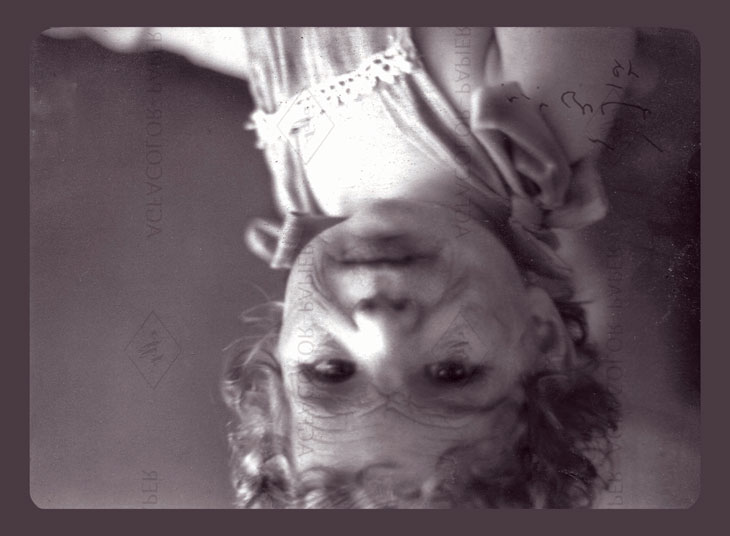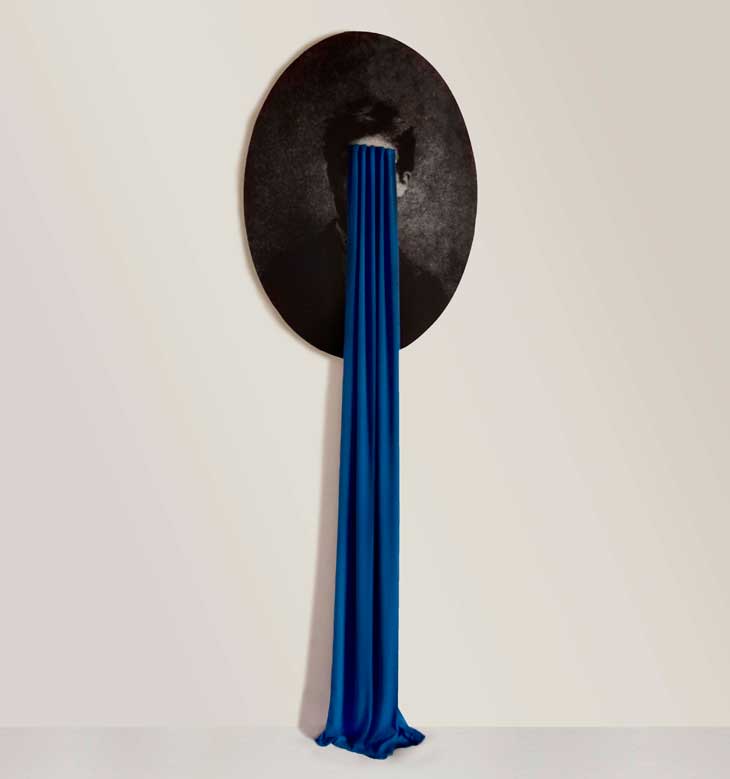

Barbad Golshiri
Barbad Golshiri’s practice is prolific and wide ranging - extending from photography and sculpture to installation, films and critical writing. Central to some of his recent pieces is the examination of how media is used and how it manipulates the regime and its masses in his homeland of Iran. Golshiri’s Portrait Of The Artist As A One Year Old Child is an altered photograph of himself as a baby – taken in 1983, the year a close friend of Golshiri’s family, with a son the same age as Barbad, was executed. The image is presented as a reversal of fortune, illustrating the precariousness of circumstance and the spanning consequences of violence; in Persian the word ’reverse’ is the same word used for ’photo’. Hung upside down, Golshiri’s Dorian Gray-like portrait warps time, conceiving an alternative course of events. The child’s face has been digitally altered to that of a geriatric, freakishly weathered and wise; the inscription written at the top right of the image, “Barbad, when one year old, ’62" - 1362 in the Persian Solar Hijri calendar – when inverted, suggests the baby is 62 years of age.
In Where Spirit And Semen Met Golshiri incorporates a portrait of infamous French poet Arthur Rimbaud – the archetypical tormented artist, who in his travels notoriously introduced himself as “I is an other”. Golshiri appropriates this reference in the philosophical sense, the ‘other’ being the self, contrasting the idea of “be yourself” against Iran’s post-revolutionary policy of unanimity or social uniformity that ‘purged’ society of ‘undesirables’ or those who didn’t ‘fit in’. Coupling the photograph with a blue curtain which spatially cuts through and shrouds the face of the subject, Golshiri puts forth the concept that the other can be anyone. The words ‘shroud’, ‘curtain’, ‘screen’ (as in cinema screen) and ‘hymen’ are the same in Persian and Golshiri uses this play on words to intersect ideas of anonymity, power, and identity. The blue curtain is a recurring motif in Golshiri’s work; the omnipresent backdrop to religious and political broadcast in Iran, it is synonymous with nationalism, and serves a practical function as a ‘blue screen’ where subliminal propaganda messages can be inserted. The title of the piece comes from both secular and religious philosophy: in early Christian doctrine, semen conveys the spirit from God, synthesising body and soul, a concept echoed in the theories of Descartes where ‘soul’, ‘personhood’ or ‘identity’ were thought to reside within and be symbolically realised within bodily matter.

